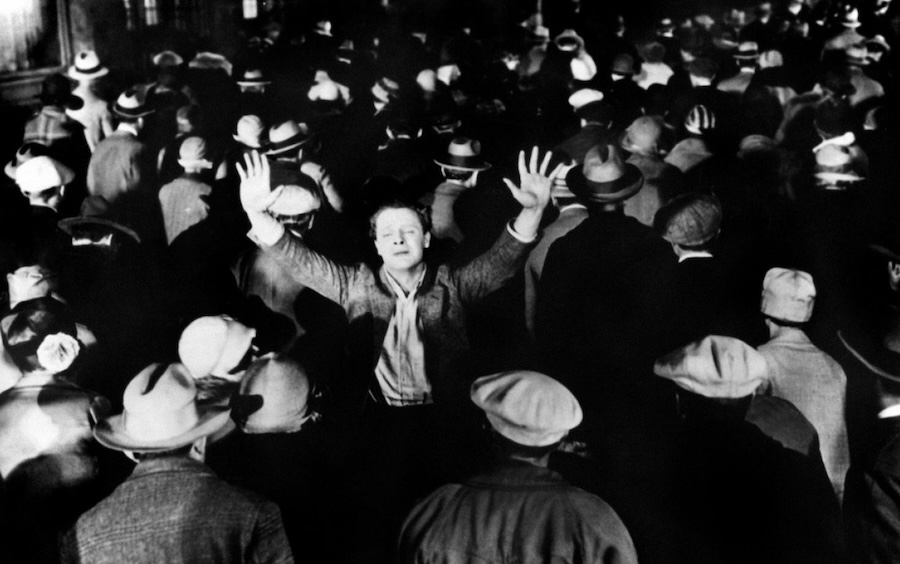
THE STORY OF YOU AND I, THE MAN NEXT DOOR, TOLD WITH A SWEEP OF DRAMA, MAGNIFICENT AND AMAZING.

When The Jazz Singer premiered in 1927, it changed the history of cinema. But it wasn’t quite overnight. There were plenty of people in Hollywood who found it hard to believe that silent film was going away, and why would they? After all, the early talkies were not great and the transition was problematic on many levels. Why would you not continue to make the masterpieces that silent cinema had offered so far? Indeed, in 1928 we saw magnificent, technically stunning films like The Passion of Joan of Arc, The Wind and The Crowd. Especially the latter was kind of a surprise.
Going to New York City
The film begins with a profound loss, as the 12-year-old John Sims’s father dies. It affects him deeply; his father instilled in him a belief that one day he would be a great man. As a young adult, John goes to New York City in search of happiness and gets a job as an office worker. During a double date in Coney Island, John meets Mary (Eleanor Boardman) whom he falls in love with. Things move fast and it only takes that one date for John to propose.
Ups and downs for a couple
The story may sound very humdrum and simple… but that’s the point. We follow the ups and downs for a couple over the years, with focus lying on the man. He comes to the big city with dreams, finds a very anonymous job, experiences some of life’s pleasures, including love and children. He’s always pictured something greater for him, but he is in fact part of a crowd, just like you and me.
Perhaps this is what attracted audiences who were moved by the story, likely recognizing themselves in it. In their review, Variety complained about nothing happening in the film, but they missed the point… and must have been asleep, because not only is there plenty of action in the story in the shape of drama and comedy, this was also an opportunity for director King Vidor to grow as a filmmaker, which was his goal. After his great success with The Big Parade (1925), a war movie, he looked to German directors like Murnau and wanted to create something similarly stylized. Watching the ordinary events of the story staged at times with unusual, creative visuals offers a striking contrast, not in a showy way, but as a sign of a filmmaker who believes in using the full power of his medium in telling a story that should be relevant to us all.
It’s fascinating to see how The Crowd deconstructs the American dream with the Great Depression waiting around the corner.
For instance, one of the most effective ways to illustrate how hard it will be for John to achieve his dreams is to transition his arrival in New York with an impressive scene that shows him in a sea of office desks, all looking exactly the same, to underscore the insignificance of his position. Several other brilliantly directed scenes elevate the film’s emotions and it’s fascinating to see how The Crowd deconstructs the American dream with the Great Depression waiting around the corner.
The two leads, who both had a special relationship with Vidor, are excellent, deliberately chosen for not being stars. Boardman was married to the director, and James Murray was an extra who did odd jobs and was pretty much discovered on the studio lot. He turned out to be perfect as John Sims, but the part was no ticket to fame and fortune for him. Murray became an alcoholic whose fate haunted Vidor, who decades later was still trying to get a movie made about him.
The Crowd may not be all that famous today, but it deserves recognition. Jean-Luc Godard was once asked why there aren’t more films made about ordinary people and he replied that he saw no point in it. After all, why remake The Crowd?
The Crowd 1928-U.S. Silent. 98 min. B/W. Directed by King Vidor. Screenplay: King Vidor, John V.A. Weaver. Cinematography: Henry Sharp. Cast: Eleanor Boardman (Mary Sims), James Murray (John Sims), Bert Roach (Bert), Estelle Clark, Daniel G. Tomlinson, Dell Henderson.
Last word: “For scenes of the sidewalks of New York, we designed a pushcart perambulator carrying what appeared to be inoffensive packing boxes. Inside the hollowed-out boxes there was room for one small-sized cameraman and one silent camera. We pushed this contraption from the Bowery to Times Square and no one ever detected our subterfuge.” (Vidor, “A Tree is a Tree”)
